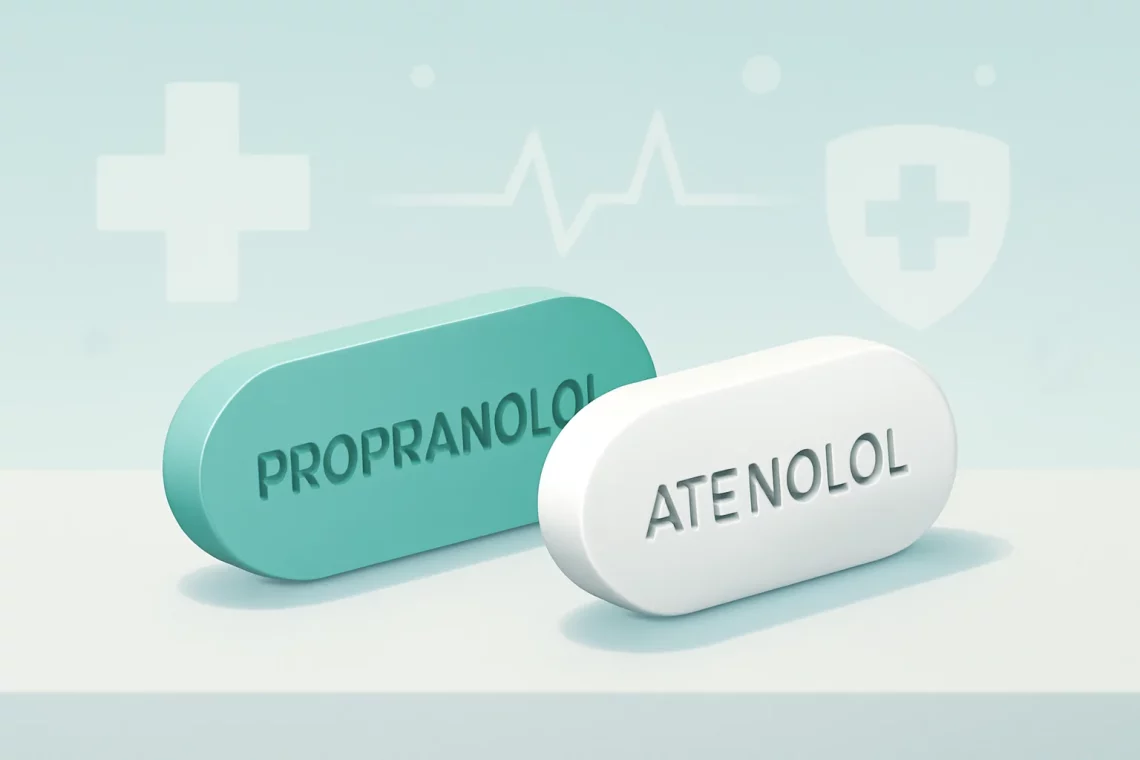
Propranolol vs Atenolol Which Beta Blocker is Right for You
Propranolol and atenolol are both medications belonging to a class known as beta-blockers. These drugs are commonly prescribed for various cardiovascular conditions, including hypertension, angina, and arrhythmias. Beyond their primary uses, beta-blockers have gained attention for their effectiveness in managing anxiety and migraine prophylaxis. As they work by blocking the effects of adrenaline on the beta-adrenergic receptors, they can significantly reduce heart rate and lower blood pressure, leading to improved overall cardiovascular health.
Despite their similarities, propranolol and atenolol differ in their specific mechanisms of action, side effects, and therapeutic applications. Understanding these differences can help patients and healthcare providers make informed decisions about which medication is best suited for an individual’s needs. While both medications have proven efficacy, the choice between them often depends on a variety of factors, including the patient’s overall health, specific medical conditions, and potential for drug interactions. In this article, we will delve deeper into the distinctions between propranolol and atenolol, providing a clearer understanding of their uses, benefits, and considerations.
Mechanism of Action
Propranolol and atenolol, while both being beta-blockers, operate through slightly different mechanisms that influence their effectiveness in treating various conditions. Propranolol is a non-selective beta-blocker, meaning it blocks both beta-1 and beta-2 adrenergic receptors throughout the body. This non-selectivity allows propranolol to have a broader range of effects, including reducing heart rate, decreasing myocardial contractility, and providing vasodilation, which can be beneficial in conditions like hypertension and anxiety.
In contrast, atenolol is a selective beta-1 blocker, primarily targeting receptors in the heart. By focusing specifically on beta-1 receptors, atenolol is effective in lowering heart rate and blood pressure with potentially fewer side effects related to the respiratory system, such as bronchoconstriction, which can occur with non-selective beta-blockers like propranolol. This selectivity makes atenolol a preferred choice for patients with respiratory issues, such as asthma or chronic obstructive pulmonary disease (COPD).
The different mechanisms of action can also influence how each drug is prescribed. Propranolol’s non-selective effects make it a versatile option for treating anxiety disorders and preventing migraines, as it can address various symptoms associated with these conditions. On the other hand, atenolol’s targeted action makes it particularly effective for managing hypertension and specific types of arrhythmias.
Overall, the choice between propranolol and atenolol can depend significantly on a patient’s specific medical history, co-existing conditions, and the desired therapeutic outcomes. Understanding how each drug works can empower patients to engage in informed discussions with their healthcare provider about their treatment options.
Indications and Uses
Both propranolol and atenolol are primarily used to manage cardiovascular conditions, but their indications extend beyond just heart health. Propranolol has a broader range of approved uses, including the treatment of hypertension, angina pectoris, certain types of arrhythmias, and even as a preventive measure for migraine headaches. It is also commonly prescribed for performance anxiety and essential tremors, where its effects on the nervous system can help mitigate physical symptoms of anxiety such as shaking and increased heart rate.
Atenolol, while also effective in reducing blood pressure and treating angina, is primarily indicated for hypertension and specific cardiac conditions, including post-myocardial infarction therapy. Its selectivity for beta-1 receptors makes it particularly effective for patients who may be sensitive to the non-selective effects of propranolol, especially those with comorbid respiratory conditions. Atenolol is often considered a first-line treatment for hypertension due to its effectiveness and generally favorable side effect profile.
When comparing the two, it is essential to consider the specific medical needs of the patient. For example, a patient with a history of migraines or anxiety disorders may benefit more from propranolol, while someone with isolated hypertension and no history of anxiety might find atenolol to be a more suitable option.
Understanding the indications for each medication can help ensure that patients receive the most appropriate treatment for their conditions. Working closely with a healthcare provider to evaluate the benefits and potential risks of each medication is crucial in determining the best course of action for individual health needs.
Side Effects and Considerations
As with any medication, both propranolol and atenolol come with potential side effects that must be considered. Propranolol, due to its non-selective nature, may lead to a range of effects including fatigue, dizziness, and gastrointestinal disturbances. Additionally, because it affects both beta-1 and beta-2 receptors, it can lead to bronchoconstriction in susceptible individuals, making it less suitable for patients with asthma or similar respiratory issues.
Atenolol, being a selective beta-1 blocker, generally has a more favorable side effect profile. However, it is not without its potential adverse reactions. Common side effects may include fatigue, bradycardia (slowed heart rate), and hypotension (low blood pressure). Some patients may also experience depression or mood changes, which can be concerning for those with a history of mental health issues.
It’s also important to consider drug interactions when prescribing these medications. Propranolol can interact with a variety of other medications, including certain antidepressants and antiarrhythmics, potentially leading to increased side effects or reduced efficacy. Atenolol, while also having potential interactions, may be a safer option in patients taking multiple medications due to its selective action.
When discussing the side effects of these medications, it is vital for patients to have open lines of communication with their healthcare provider. Monitoring for adverse effects and adjusting dosage or switching medications when necessary can help optimize treatment outcomes. Patients should never hesitate to report any unusual symptoms or concerns to their healthcare professional, as this can lead to timely adjustments in their treatment plan.
Conclusion
In summary, while both propranolol and atenolol are effective beta-blockers used in the management of cardiovascular conditions, their differences in mechanism of action, indications, and side effects can significantly influence their use in clinical practice. Propranolol’s non-selective nature allows it to be versatile in treating anxiety and migraines, while atenolol’s selectivity makes it a safer choice for patients with respiratory concerns.
Choosing between propranolol and atenolol requires careful consideration of a patient’s specific medical history, the conditions being treated, and any potential side effects. A collaborative approach between patients and healthcare providers is essential in determining the most appropriate medication for each individual’s needs.
As a final note, this article is not intended as medical advice. Always consult a healthcare professional for personalized recommendations and before making any changes to your medication regimen. Health concerns should be addressed with a qualified medical provider who can provide tailored guidance based on individual circumstances.




